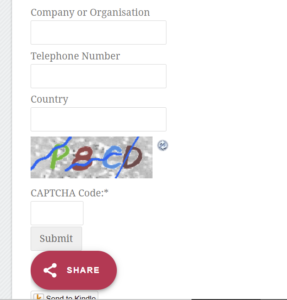Article
CAPTCHAs May Soon Go Extinct (gizmodo.com)
From the horse’s mouth
Cloudflare
Humanity wastes about 500 years per day on CAPTCHAs. It’s time to end this madness (cloudflare.com)
My Comments
The CAPTCHA is being used as a means to prevent spam emails or comments on Websites or to assure that people who register in an online context are real people.
But these measures, typically ranging from transcribing letters or identifying objects, can be very frustrating for many people. This is caused by hard-to-read or small letters or instructions relating to object identification being difficult to understand on a language or cultural context. As well, some of these CAPTCHAs don’t work well for mobile setups like smartphones which is increasingly the common way to use the Internet. That leads to abandoned registrations or online-shopping carts or people not joining in to online services for example.

you scanning your fingerprint on your flaptop’s fingerprint scanner or you entering your device’s PIN code to prove that a person is entering the data
CloudFlare are working on a different approach to authenticating the personhood of a device user without resorting to letters to transcribe or objects to identify. Initially they are using USB security keys for this purpose but are moving towards full WebAuthN implementation for this purpose.
This approach will work with WebAuthN-capable browser and operating-system setups and work in a similar vein to password-free authentication for online services using that technology. This will require you to enter your device PIN, use face recognition or use the fingerprint reader, operate a USB security key or an authenticator app on your smartphone to prove your personhood, as if you are enrolling in to an online service that implements WebAuthN technology.
The success or failure of the WebAuthN test will simply allow you to submit that form or not on the Website. The logic won’t cause any extra identifying factors to be stored on the online service’s server under default setups. But it may store a device-local cookie to record success so as to treat the session as authenticated, catering towards data revision approaches in wizard-based forms or long data-entry sessions.
A question I would have with this CloudFlare approach is how it can work with computing setups that don’t support WebAuthN. This will also include shared computing setups and public-access computers where the use of this kind of authentication may not be practicable for a single session.
But Cloudflare’s effort is taking WebAuthN further as a way to prove that a real person rather than a robot is actually operating an online account in a manner that is universal to abilities, languages and cultures.



